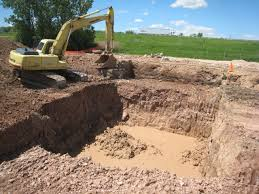A wide variety of land remediation techniques are available to restore the physical landscape and reduce risks of environmental harm. These techniques range from removing contaminated soils and relocating them, to capping the soil and planting bare ground. Abiotic (physical) remediation measures are also often necessary to address erosion, surface runoff and flooding issues at sites.

The most common method for contaminated soil remediation is excavation. In this technique, contaminated soil is excavated and moved to a landfill zoned for hazardous waste. It is then replaced with clean soil. To find out more about Land Remediation Services, contact a site like soilfix.co.uk/services/groundwater-soil-remediation-services
Soil that is impacted by metals like chromium and lead benefit from this type of remediation. Dredging can also be carried out to remove sediment contamination from different bodies of water. These contaminated materials are moved to a landfill and cleaned up using chemical processes. The resulting cleaner sediments can then be reused on site or placed back into the body of water.

Experts in physical sciences must be involved to determine the soil makeup and the underlying site geology so they can recommend the best remediation techniques. They must have good written and oral communication skills to convey their findings to other scientists working on the project, as well as to members of the public. They may need to operate one or several types of power construction equipment, including vehicles that dig, load and dump sand, earth and gravel.


